Local Deformation and Mn-C Short-Range Ordering in a High-Mn Fe-18Mn-0.6C Steel
Abstract
:1. Introduction
2. Material and Experiment
2.1. Material and Heat Treatment
2.2. Uniaxial Tensile Tests with In-Situ 2D Digital Image Correlation (DIC) Monitoring
2.3. Small Angle Neutron Scattering (SANS)
3. Results and Discussion
3.1. Serrated Flow and PLC Bands
3.2. Mn-C SRO in Tensile Samples
4. Conclusions
- With an increase in the strain during uniaxial tensile tests, the mean radius of Mn-C SRO decreases, while the number density of Mn-C SRO increases. With increasing strain in the uniaxial tensile tests, the velocity of PLC bands decreases.
- The Mn-C SRO in the location after the PLC band passed through exhibits a smaller SRO size with a higher number density compared with that in the section before the PLC band passes through.
- At a large applied strain (>15%), the PLC bands form steadily and continuously. On the flow curve, each plateau between two close serration peaks corresponds to the nucleation and propagation of one PLC band within the gauge length. The serration corresponds to the initiation/disappearance of the PLC band outside the gauge length.
- The strain distributes heterogeneously and is localized within the PLC bands during plastic deformation. In the section after the PLC band passed through, the local strain is larger than that in the section ahead of the point where the PLC band passed through.
Author Contributions
Acknowledgments
Conflicts of Interest
References
- Chen, L.; Kim, H.S.; Kim, S.K.; Cooman, B.C. Localized deformation due to Portevin-Le Chatelier effect in 18Mn–0.6C twip austenitic steel. ISIJ Int. 2007, 47, 1804–1812. [Google Scholar] [CrossRef]
- Kang, M.; Shin, E.; Woo, W.; Lee, Y.K. Small-angle neutron scattering analysis of Mn–C clusters in high-manganese 18Mn–0.6C steel. Mater. Charact. 2014, 96, 40–45. [Google Scholar] [CrossRef]
- Kim, J.K.; Chen, L.; Kim, H.S.; Kim, S.K.; Estrin, Y.; De Cooman, B.C. On the tensile behavior of high-manganese twinning-induced plasticity steel. Metall. Mater. Trans. A 2009, 40, 3147–3158. [Google Scholar] [CrossRef]
- Bleck, W.; Guo, X.; Ma, Y. The TRIP effect and its application in cold formable sheet steels. Steel Res. Int. 2017, 88, 1700218. [Google Scholar] [CrossRef]
- Lee, S.J.; Kim, J.; Kane, S.N.; De Cooman, B.C. On the origin of dynamic strain aging in twinning-induced plasticity steels. Acta Mater. 2011, 59, 6809–6819. [Google Scholar] [CrossRef]
- Brindley, B.; Worthington, P. Yield-point phenomena in substitutional alloys. Metall. Rev. 1970, 15, 101–114. [Google Scholar] [CrossRef]
- Pink, E.; Grinberg, A. Serrated flow in a ferritic stainless-steel. Mater. Sci. Eng. 1981, 51, 1–8. [Google Scholar] [CrossRef]
- Wang, W.H.; Wu, D.; Shah, S.S.A.; Chen, R.S.; Lou, C.S. The mechanism of critical strain and serration type of the serrated flow in Mg–Nd–Zn alloy. Mater. Sci. Eng. A 2016, 649, 214–221. [Google Scholar] [CrossRef]
- Kubin, L.; Ananthakrishna, G.; Fressengeas, C. Comment on “Portevin-Le Chatelier effect”. Phys. Rev. E 2002, 65, 053501. [Google Scholar] [CrossRef] [PubMed]
- Hähner, P. On the physics of the Portevin-Le Châtelier effect part 2: From microscopic to macroscopic behaviour. Mater. Sci. Eng. A 1996, 207, 216–223. [Google Scholar] [CrossRef]
- Hähner, P. On the physics of the Portevin-Le Châtelier effect part 1: The statistics of dynamic strain ageing. Mater. Sci. Eng. A 1996, 207, 208–215. [Google Scholar] [CrossRef]
- Yilmaz, A. The Portevin-Le Chatelier effect: A review of experimental findings. Sci. Technol. Adv. Mater. 2011, 12, 063001. [Google Scholar] [CrossRef] [PubMed]
- Dastur, Y.N.; Leslie, W.C. Mechanism of work-hardening in hadfield manganese steel. Metall. Trans. A 1981, 12, 749–759. [Google Scholar] [CrossRef]
- Chipman, J.; Brush, E.F. The activity of carbon in alloyed austenite at 1000 °C. Trans. Met. Soc. AIME 1968, 242, 35–41. [Google Scholar]
- Massardier, V.; Merlin, J.; Le Patezour, E.; Soler, M. Mn–C interaction in Fe–C–Mn steels: Study by thermoelectric power and internal friction. Metall. Mater. Trans. A 2005, 36, 1745–1755. [Google Scholar] [CrossRef]
- Owen, W.S.; Grujicic, M. Strain aging of austenitic hadfield manganese steel. Acta Mater. 1998, 47, 111–126. [Google Scholar] [CrossRef]
- Von Appen, J.; Dronskowski, R. Carbon-induced ordering in manganese-rich austenite—A density-functional total-energy and chemical-bonding study. Steel Res. Int. 2011, 82, 101–107. [Google Scholar] [CrossRef]
- Song, W.; Bogdanovski, D.; Yildiz, A.B.; Houston, J.E.; Dronskowski, R.; Bleck, W. On the Mn–C short-range ordering in a high-strength high-ductility steel: Small angle neutron scattering and ab initio investigation. Metals 2018, 8, 44. [Google Scholar] [CrossRef]
- Hong, S.; Shin, S.Y.; Lee, J.; Ahn, D.H.; Kim, H.S.; Kim, S.K.; Chin, K.G.; Lee, S. Serration phenomena occurring during tensile tests of three high-manganese twinning-induced plasticity (TWIP) steels. Metall. Mater. Trans. A 2014, 45, 633–646. [Google Scholar] [CrossRef]
- Radulescu, A.; Szekely, N.K.; Appavou, M.-S. KWS-2: Small angle scattering diffractometer. JLSRF 2015, 1, 29. [Google Scholar] [CrossRef]
- File:Structure FeAl B2.svg. Available online: https://commons.wikimedia.org/wiki/File:Structure_FeAl_B2.svg (accessed on 27 August 2009).
- Radulescu, A.; Pipich, V.; Frielinghaus, H.; Appavou, M.-S. KWS-2, the high intensity/wide Q-range small-angle neutron diffractometer for soft-matter and biology at FRM II. J. Phys. Conf. Ser. 2012, 351, 012026. [Google Scholar] [CrossRef]
- Pedersen, J. Determination of size distribution from small-angle scattering data for systems with effective hard-sphere interactions. J. Appl. Crystallogr. 1994, 27, 595–608. [Google Scholar] [CrossRef]
- Kohlbrecher, J. SASfit: A Program for Fitting Simple Structural Models to Small Angle Scattering Data. Available online: https://kur.web.psi.ch/sans1/sasfit/sasfit.pdf (accessed on 3 June 2010).
- Pipich, V. QtiKWS: User-Friendly Program for Reduction, Visualization, Analysis and Fit of SA(N)S Data. Available online: http://iffwww.iff.kfa-juelich.de/~pipich/dokuwiki/doku.php/qtikws (accessed on 22 January 2007).
- He, S.M.; van Dijk, N.H.; Paladugu, M.; Schut, H.; Kohlbrecher, J.; Tichelaar, F.D.; van der Zwaag, S. In situ determination of aging precipitation in deformed Fe–Cu and Fe–Cu–B–N alloys by time-resolved small-angle neutron scattering. Phys. Rev. B 2010, 82, 174111. [Google Scholar] [CrossRef]
- Zhang, S.; Kohlbrecher, J.; Tichelaar, F.D.; Langelaan, G.; Brück, E.; van der Zwaag, S.; van Dijk, N.H. Defect-induced Au precipitation in Fe–Au and Fe–Au–B–N alloys studied by in situ small-angle neutron scattering. Acta Mater. 2013, 61, 7009–7019. [Google Scholar] [CrossRef]
- Breßler, I.; Kohlbrecher, J.; Thünemann, A.F. Sasfit: A tool for small-angle scattering data analysis using a library of analytical expressions. J. Appl. Crystallogr. 2015, 48, 1587–1598. [Google Scholar] [CrossRef] [PubMed]
- Moller, J.; Kranold, R.; Schmelzer, J.; Lembke, U. Small-angle x-ray-scattering size parameters and higher moments of the particle-size distribution function in the asymptotic stage of ostwald ripening. J. Appl. Crystallogr. 1995, 28, 553–560. [Google Scholar] [CrossRef]
- Cottrell, A. LXXXVI. A note on the Portevin-Le Chatelier effect. Lond. Edinb. Dubl. Phil. Mag. 1953, 44, 829–832. [Google Scholar] [CrossRef]
- Cuddy, L.; Leslie, W. Some aspects of serrated yielding in substitutional solid solutions of iron. Acta Metall. 1972, 20, 1157–1167. [Google Scholar] [CrossRef]
- Kim, J.K.; Chen, L.; Kim, H.S.; Kim, S.K.; Kim, G.S.; Estrin, Y.; De Cooman, B.C. Strain rate sensitivity of C-alloyed, high-Mn, twinning-induced plasticity steel. Steel Res. Int. 2009, 80, 493–498. [Google Scholar] [CrossRef]
- Zavattieri, P.; Savic, V.; Hector, L.; Fekete, J.; Tong, W.; Xuan, Y. Spatio-temporal characteristics of the Portevin–Le Châtelier effect in austenitic steel with twinning induced plasticity. Int. J. Plast. 2009, 25, 2298–2330. [Google Scholar] [CrossRef]
- Zdunek, J.; Spychalski, W.; Mizera, J.; Kurzydłowski, K. The influence of specimens geometry on the PLC effect in Al–Mg–Mn (5182) alloy. Mater. Charact. 2007, 58, 46–50. [Google Scholar] [CrossRef]
- Korbel, A.; Zasadzinski, J.; Sieklucka, Z. A new approach to the Portevin-LeCatelier effect. Acta Metall. 1976, 24, 919–923. [Google Scholar] [CrossRef]
- De Cooman, B.C.; Chen, L.; Kim, H.S.; Estrin, Y.; Kim, S.K.; Voswinckel, H. State-of-the-Science of High Manganese TWIP Steels for Automotive Applications, in Microstructure and Texture in Steels; Springer: New York, NY, USA, 2009; pp. 165–183. [Google Scholar]
- Bian, X.; Yuan, F.; Wu, X. Correlation between strain rate sensitivity and characteristics of Portevin-LeChátelier bands in a twinning-induced plasticity steel. Mater. Sci. Eng. A 2017, 696, 220–227. [Google Scholar] [CrossRef]
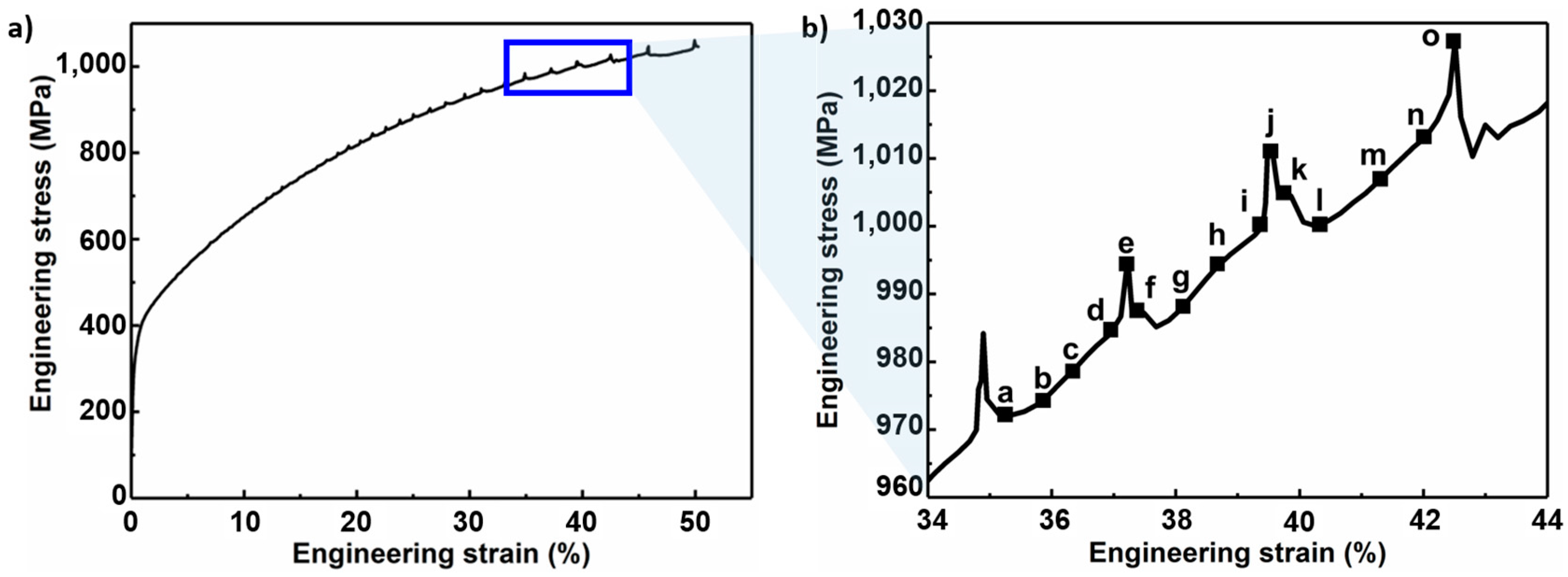
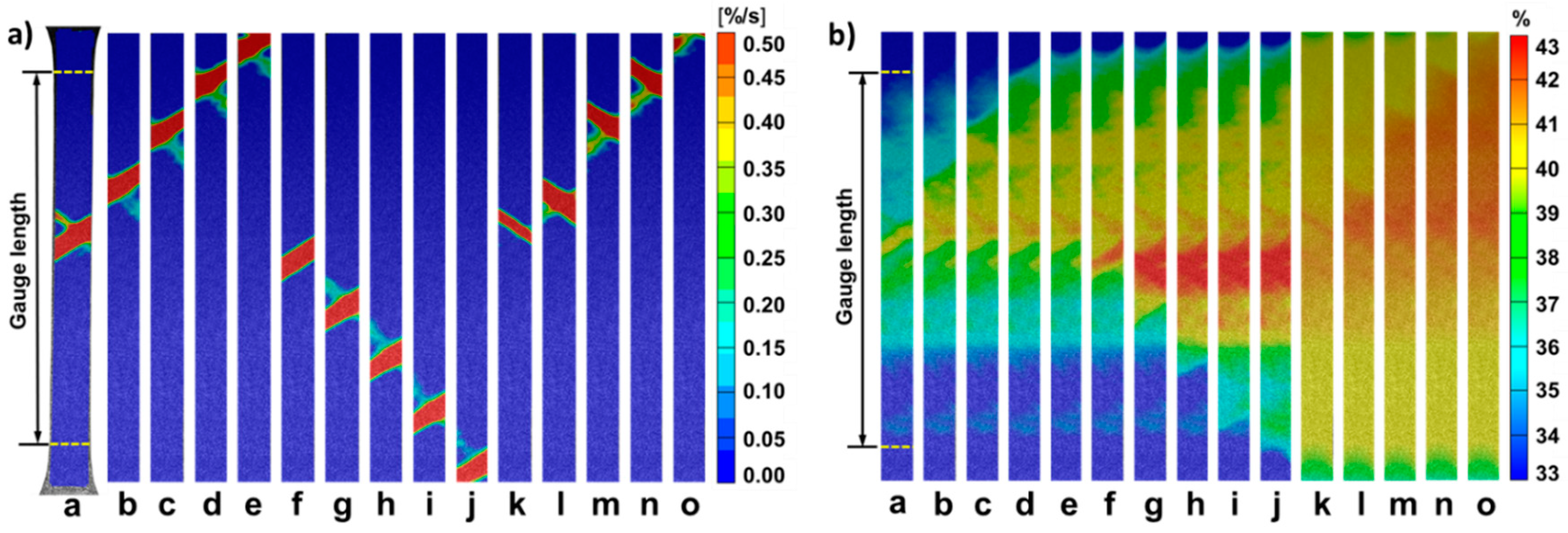
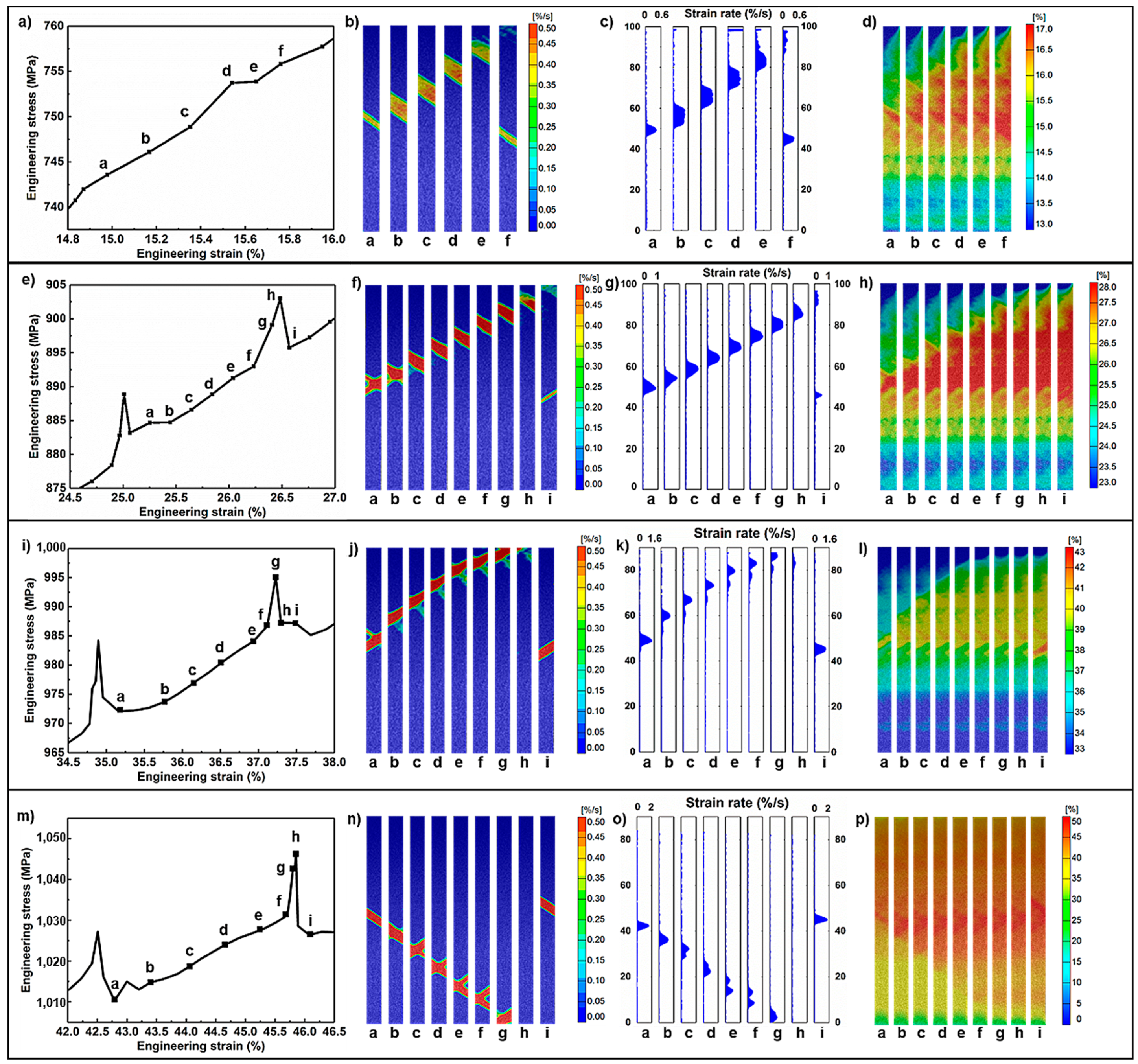
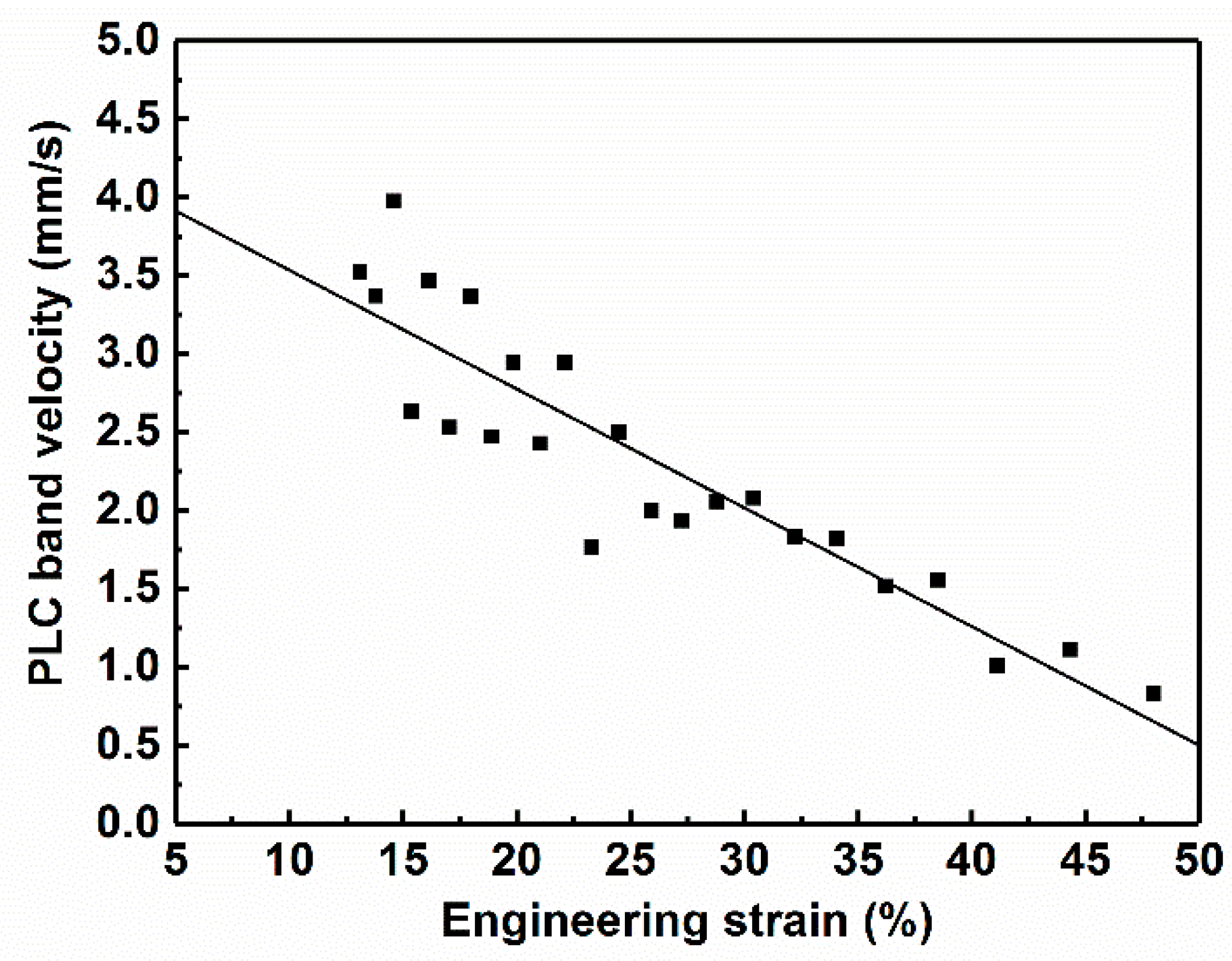
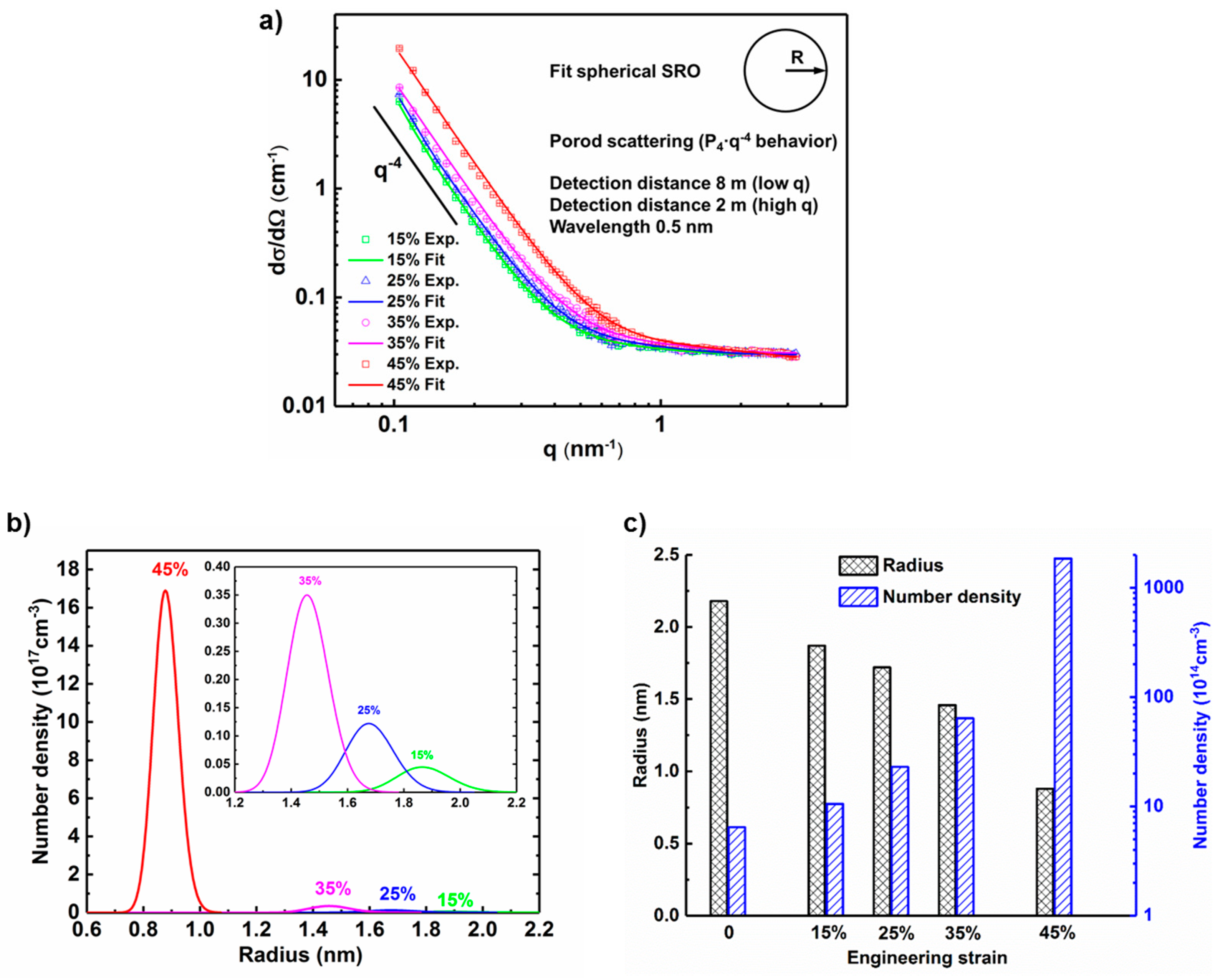
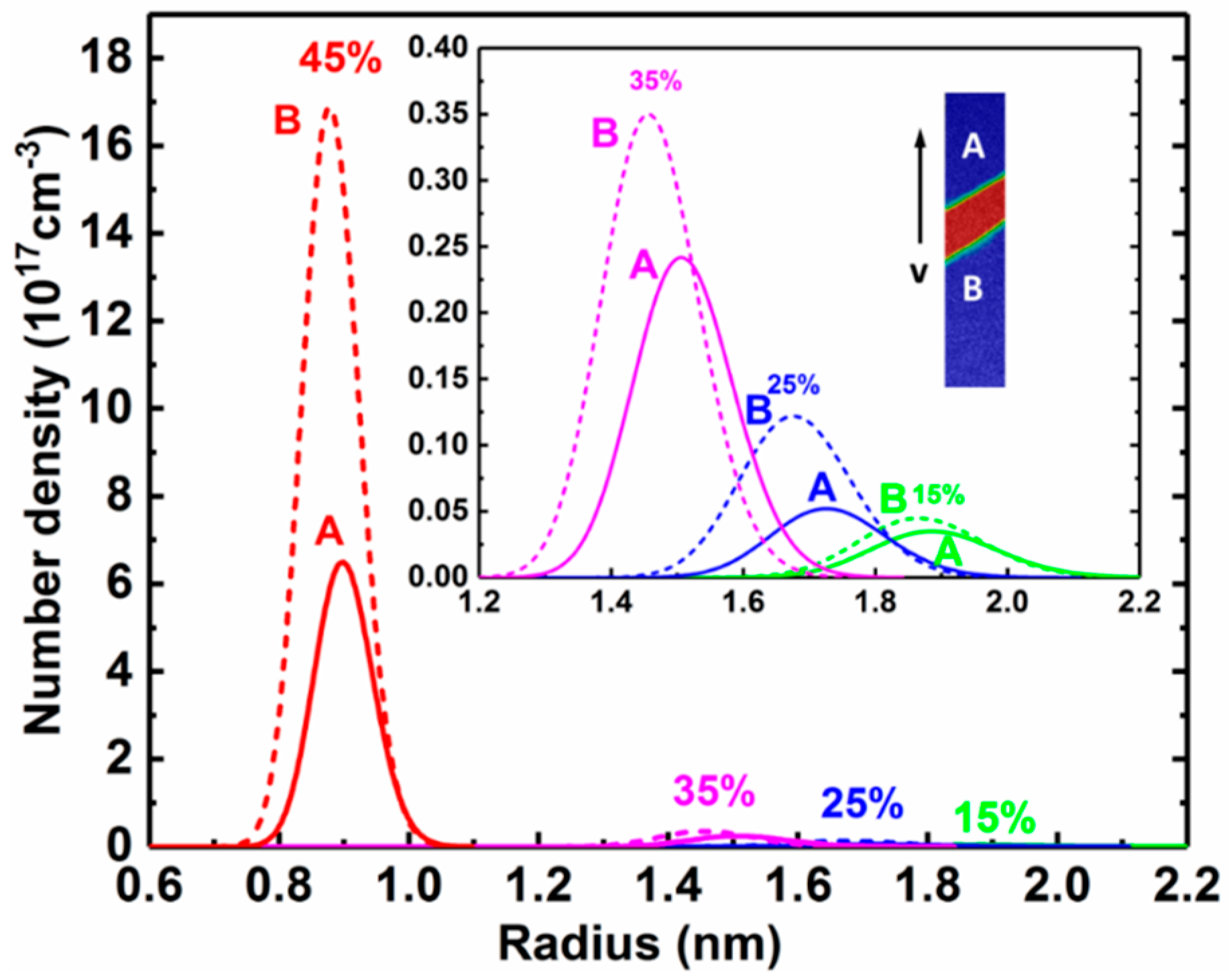
| Element | C | Si | Mn | P | S | Cr | Ni | Al | Fe |
|---|---|---|---|---|---|---|---|---|---|
| wt % | 0.594 | 0.05 | 18.40 | 0.007 | 0.009 | 0.02 | 0.04 | 0.005 | Rest |
© 2018 by the authors. Licensee MDPI, Basel, Switzerland. This article is an open access article distributed under the terms and conditions of the Creative Commons Attribution (CC BY) license (http://creativecommons.org/licenses/by/4.0/).
Share and Cite
Song, W.; Houston, J.E. Local Deformation and Mn-C Short-Range Ordering in a High-Mn Fe-18Mn-0.6C Steel. Metals 2018, 8, 292. https://doi.org/10.3390/met8050292
Song W, Houston JE. Local Deformation and Mn-C Short-Range Ordering in a High-Mn Fe-18Mn-0.6C Steel. Metals. 2018; 8(5):292. https://doi.org/10.3390/met8050292
Chicago/Turabian StyleSong, Wenwen, and Judith E. Houston. 2018. "Local Deformation and Mn-C Short-Range Ordering in a High-Mn Fe-18Mn-0.6C Steel" Metals 8, no. 5: 292. https://doi.org/10.3390/met8050292





